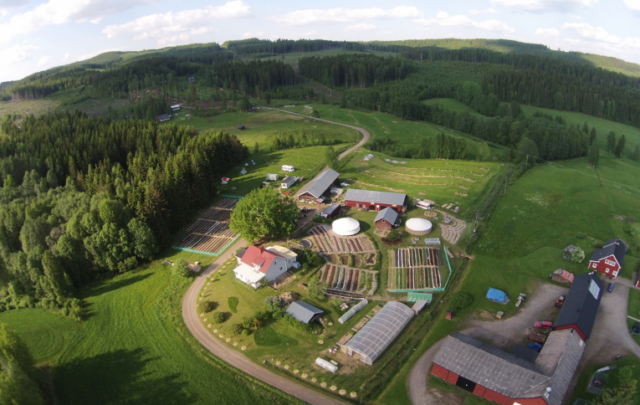Click on the headline (link) for the full text.
Many more articles are available through the Energy Bulletin homepage
Today’s suburbs, tomorrow’s slums?
Jeff Gray, Globe & Mail
‘Peak oil’ theorists say house prices outside cities will collapse as the cost of gas rises, forcing people to choose urban living
—
According to some doomsday scenarios, spiking gas prices could turn the cul-de-sacs and two-car garages that surround North America’s cities – built over the past 60 years and designed for the convenience of people with cars – into tomorrow’s slums.
The predictions for the most part come from subscribers to the theory of “peak oil,” which holds that crude prices will shoot permanently upward as global demand outstrips dwindling supply, ruining the economy. But their predictions are getting a second look now, as suburbanites, especially in the United States, grumble at the rising price of a fill-up.
Some warn the cost of gasoline will make the most sprawling U.S. suburbs so unattractive that housing values there will collapse, forcing many people to abandon their homes for urban areas better served by public transit and leaving only squatters, criminals and those who can’t afford to leave the outskirts.
Could it happen in Canada? Many experts doubt that gas prices, while bound to rise, will shoot up so suddenly as to strangle the suburbs, which do not sprawl to the extent that many do in the U.S. But it is clear that a shift away from the traditional suburb is also under way in Canada. Suburban municipal governments are scrambling to retrofit sprawl with denser development and better public transit to keep people moving, responding to concerns not just about the rising price of gas, but also about carbon emissions and traffic congestion.
(30 June 2008)
Film Review: Garbage Warrior
Rob Hopkins, Transition Culture
So, ‘Sex and the City’ wasn’t the only film I saw this week, as it turns out (amazing how many comments that piece generated!). I also had the pleasure to see the excellent new film ‘Garbage Warrior’ which focuses on the life and work of Michael Reynolds, who developed the concept of the Earthship, homes built using waste materials, most famously old car tyres. Here is the film’s trailer;
[YOUTUBE video]
Reynolds is one of those great stubborn, persistent and driven people upon whom the dissemination of a great idea often depends. His work began in the 1970s, when having trained as an architect, he decided that what architecture was providing for the world was in fact ‘endless horseshit’, which failed to meet either the needs of people or planet. He became fascinated by the creation of low-cost housing which used recycled materials, and which created self-reliant systems, homes that generate their own power, gather and treat their own water, and grow their own food. In that upsurge of innovation and creativity that emerged from the first oil shock of 1973, he began to build prototypes.
His first structures were at communes, and on radical hippy projects where people had time, energy and enthusiasm but little money. His first buildings were outlandish, highly experimental and each one provided scope for testing and refining. He worked driven by a faith in what he was doing, and a belief that the right doors would open at the right time. “I always thought if you’re doing things right for people, they’ll find you”, he says in the film.
The importance of this scope to experiment comes through in the film as a very strong theme. The Earthship concept was born of trial and error, of operating at the cutting edge. Reynolds was operating outside the law, building Earthship subdivisions which provided little in the way of services, principally because, being autonomous buildings, they didn’t need any. As he puts it “outside the law is the place where the information lies”.
(30 June 2008)
Elephant in the Drop-Off Zone
Hans Noeldner, Entropic Journal
This morning, as I walked towards Prairie View Elementary School to escort a child to my wife’s in-home day-care on West Lincoln Street, I witnessed two motorists nearly run down children who were trying to cross the street. I am sick with fear. And I am filled with anger at my community. Because the problem isn’t just these two distracted motorists. It’s how so many of us have chosen to live.
No doubt the summer school curricula will include many lessons on conserving resources and preserving ecosystems and coexisting peacefully on Earth. But what will our children learn about fighting global warming when they are strapped all by themselves into the back seat of a fossil-fueled motor vehicle? What will they learn about overcoming America’s addiction to oil with Mom’s foot on the accelerator pedal? And what will they learn about coexisting with 6.5 billion other human beings when their parents can’t even manage to live in peace with children who walk and ride their bicycles to summer school?
It’s not just that so many of us still deny the connection between our own hand on the gas pump and the blood and treasure that America is forfeiting to occupy the Mideast – we can always blame President Bush instead of ourselves and our neighbors.
(30 June 2008)





